Centering Wellbeing in Education
It's time to make learning spaces more human.
When Steelcase researchers began to delve deep into the topic of wellbeing in education in 2019, they could not predict that it would become a full-blown crisis during the course of their investigation.
“Wellbeing was already a big issue in education when we started our work. The COVID pandemic elevated it into a crisis,” reports Aileen Strickland, senior design researcher, who led this global study.
Today, more than ever before, students and educators are stressed, anxious, overwhelmed and distressed. Unfortunately, many of these problems already existed pre-COVID. However, the social isolation created by the pandemic along with the urgency to adapt to new ways of teaching and learning have exacerbated them to new levels of concern. Numerous studies have reported unprecedented levels of distress as well as measurable declines in learning.
As the urgency to improve wellbeing in education has intensified, Strickland says it’s also amplifying a key insight of her team’s work: that the wellbeing of students and educators isn’t simply a personal issue. It’s also systemic, deeply interconnected to the school’s culture as well that of families and the larger community. And coming to grips with today’s crisis of wellbeing in education demands addressing it at all three levels. “The dimensions of what impacts our wellbeing are intrinsically connected to our relationships, communities and environments around us,” she says. “Our collective societies must be well for people’s individual wellbeing to thrive.”
Today’s Opportunity: Make School More Human
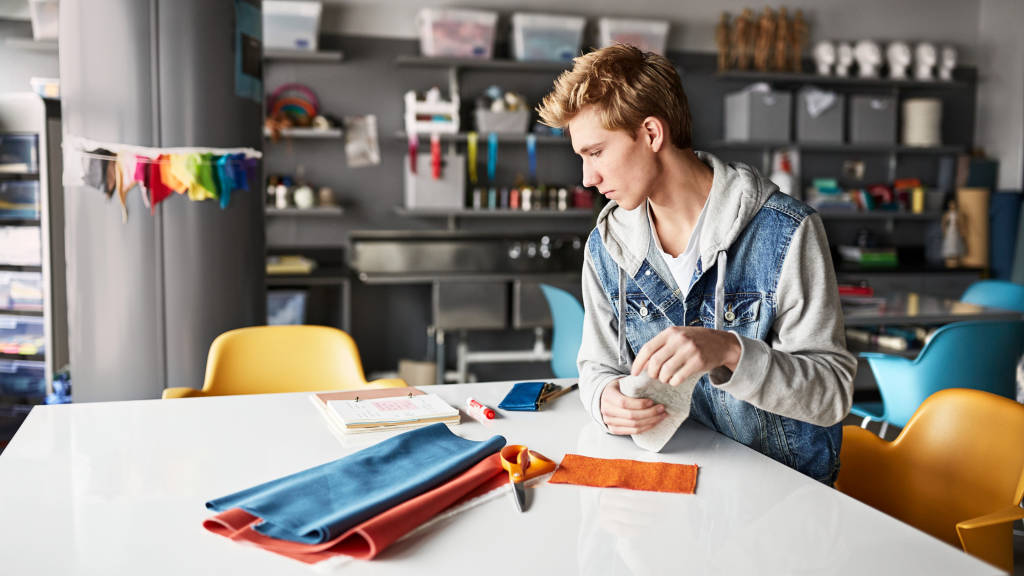
In contrast to wellbeing, “ill-being” is the term Strickland uses to describe the condition that currently exists in many schools. That reality carries high costs, directly affecting a school’s bottom line. Students’ lack of wellbeing, for example, is related to low achievement, retention and graduation rates, which directly affect funding. Meanwhile, teacher burnout results in absenteeism, increased healthcare costs and high rates of turnover. The net out is that wellbeing profoundly impacts the effectiveness of student and instructor.
Especially now, with stressors and barriers so recognized and widespread, Steelcase research points to new opportunities to reexamine teaching and learning experiences with the goal of positioning wellbeing at the very center of education. This requires shifts in paradigms, pedagogies, goals, skills and organizational structures to respond to today’s changing forces, values and expectations that place a new emphasis on making education more human-centered.
The impact and value of physical spaces in education is also being actively reassessed. How can learning environments play a more active role in successfully nurturing wellbeing?
“There’s so much room for innovation and growth,” says Strickland. “As schools are rethinking what teaching and learning will look like going forward, this can be a moment to center wellbeing in ways that have never been done before. Yes, it can seem incredibly complex because, after all, we’re addressing what it really means to nurture and sustain the development of healthy, full human beings. But it needs to happen. And it can be done. Everyone has agency to do something, and even small changes can make a big difference.”
We can Help
Connect with us for more about our wellbeing research and design considerations.
Six Pillars of Wellbeing in Education
Wellbeing is often thought of as primarily emotion-based – i.e., a “feel good” experience versus being anxious or stressed. Steelcase research, however, suggests that a person’s wellbeing is better understood as a conflux of physical, cognitive and emotional factors, each important and all interdependent.
“Expanding the definition of wellbeing helps us understand its dynamic and broad nature,” explains Strickland. “Extensive Steelcase research identified six pillars of wellbeing that are universally true for humans: meaning, belonging, authenticity, mindfulness, optimism and vitality. Applying these pillars to education, we’ve discovered that they strongly resonate as both a foundation and a pathway for learner and teacher wellbeing.”
The six pillars also underscore how important it is to think holistically about creating spaces for wellbeing in schools. At the highest level there are two types of spaces that can help support wellbeing: dedicated and embedded. Dedicated spaces are rooms or even entire floors that are specifically dedicated to fostering wellbeing — such as fitness centers, mindfulness rooms and counseling centers. Conversely, embedded spaces that foster wellbeing can be found throughout a building. An embedded space employs the pillars of wellbeing while also supporting its primary function as a classroom, commons space, library, cafe, student union or staff lounge. For example, by purposefully shielding or zoning smaller areas of the larger space, it’s possible to support teachers’ and students’ wellbeing while also increasing the utility of the space.
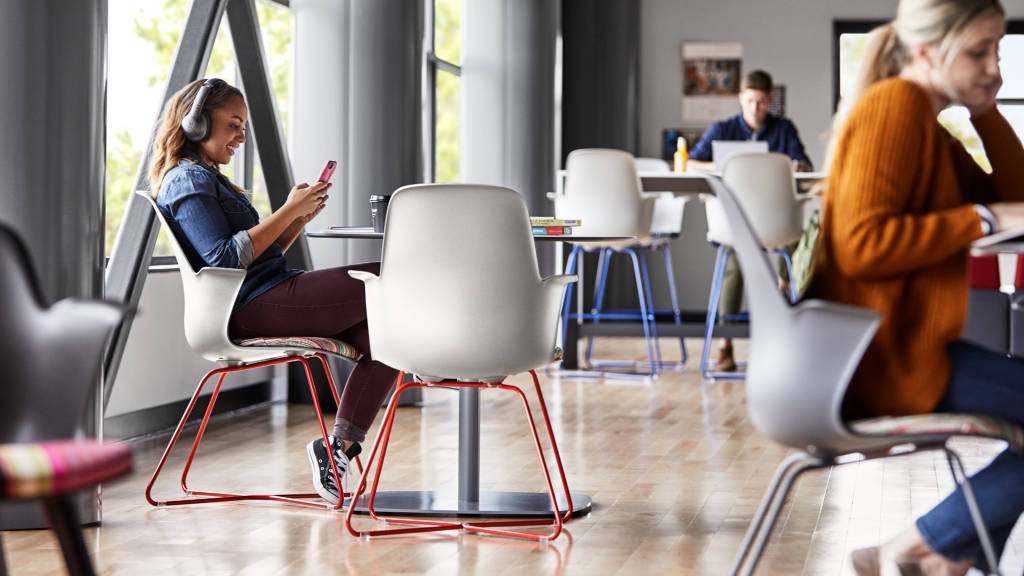
Designing for a Reset
Consider these ways the six pillars can help pivot educational environments in support of improved wellbeing:
1) Meaning – Discovering purpose, starting from within and connecting to something bigger.
Why it matters: A positive sense of purpose can lead to an increase in gratitude, confidence, optimism and engagement in healthy behaviors.
How the learning environment can help:
- Enable individual and communal creation
For example: Allow students to freely manipulate elements in the environment
- Inspire awe
For example: Infuse the environment with biophilic connections to nature; support virtual connections with people and places across the globe
2) Belonging – Being a part of a group, accepted and valued for who you are.
Why it matters: People who have a sense of belonging show higher enjoyment, interest, confidence, happiness, enthusiasm and better health.
How the learning environment can help:
- Provide spaces that allow students to be truly seen and heard
For example: Create discussion areas in formal as well as informal learning spaces; amplify areas for visibly presenting ideas and creations; create displays that reflect students’ cultural identities and heritages
- Enable connection and community
For example: Showcase school mascots, logos and colors; provide a variety of environments that encourage spontaneous conversations
- Create welcoming and inclusive spaces
For example: Bring nature inside via biophilic design features such as plants, natural light and views; visibly celebrate place-based relationships such as regional ecology and/or history; design inclusive, accessible environments that celebrate diversity and uniqueness
3) Authenticity – Creating, finding, knowing and expressing one’s true nature or self.
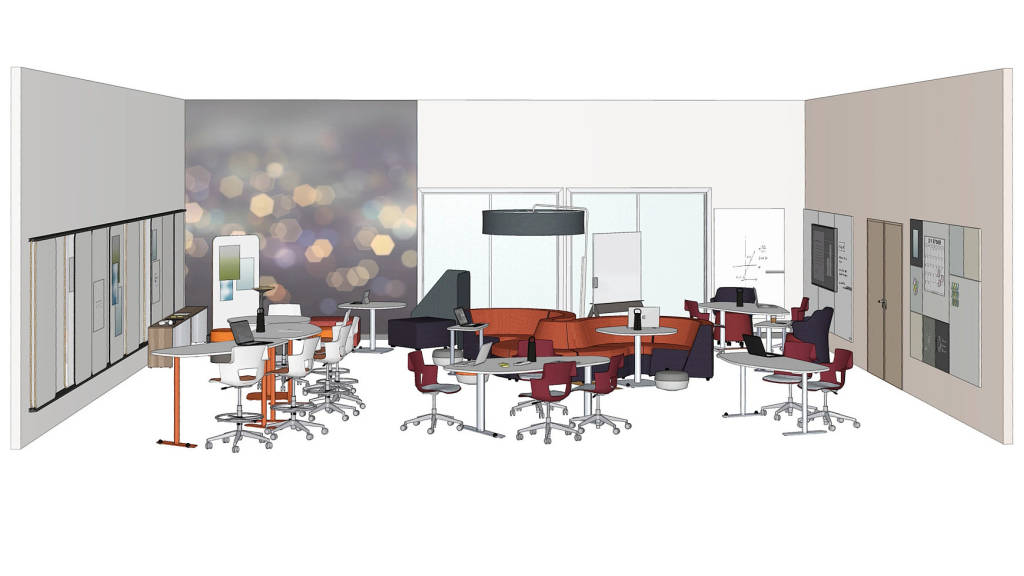
Why it matters: A healthy self-identity leads to a higher commitment to do well and more positive academic and life outcomes, while negative stereotypes can undermine motivation and learning.
How the learning environment can help:
- Enable choices and self-determination
For example: Incorporate flexible, moveable furnishings; create a variety of settings that allow for differing learning and teaching styles
- Encourage diversity and self-expression
For example: Provide easy access to a variety of tools and mediums for self-expression, such as moveable whiteboards and maker spaces for hands-on learning
- Foster a sense of value
For example: Incorporate ways to celebrate teachers and students
4) Mindfulness – Awareness and openness to the present moment, ourselves, others and the world around us.
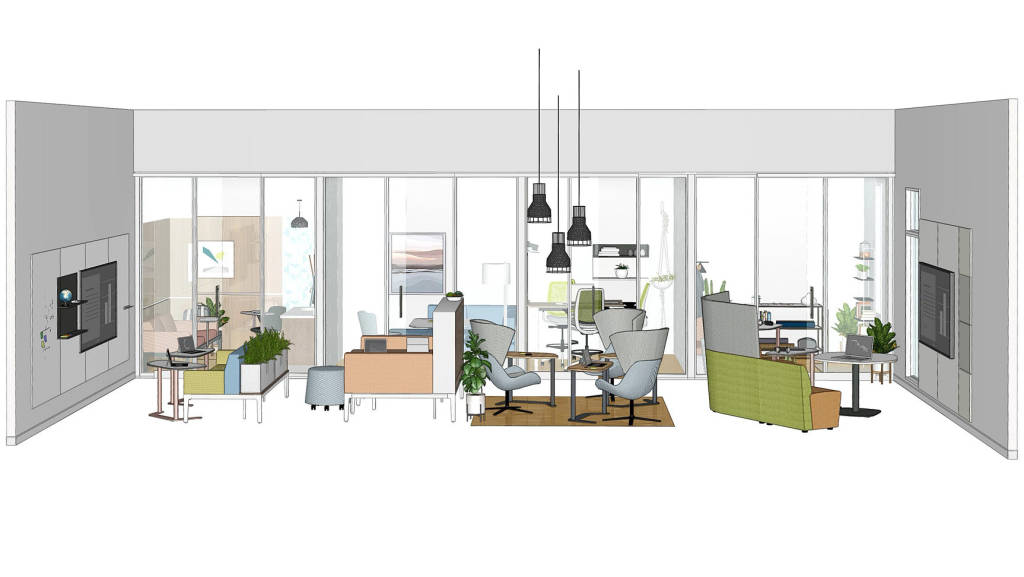
Why it matters: A “miracle skill for learning,” mindfulness techniques can increase attention, self-esteem, compassion for self and others, metacognition and executive cognitive functions, while decreasing factors that inhibit learning such as stress, anxiety, depression, physical distress and emotional reactivity.
How the learning environment can help:
- Create sensory richness
For example: Infuse the environment with biophilic attributes such as natural materials and motifs; allow for individual choice and control over where and how to sit
- Allow for refuge and renewal
For example: Create spaces where students and teachers can retreat to calm down and/or refocus
- Ensure exposure to diversity
For example: Design comfortable, conversation areas where students and teachers can openly and safely interact with others; display a diverse range of perspectives on issues and ideas
5) Optimism – Cultivating a positive mindset rooted in perseverance, hope and growth.
Why it matters: Boosts hope and persistence, resulting in greater academic gains and more positive life outcomes.
How the learning environment can help:
- Encourage challenge and effort
For example: Provide spaces that create different learning opportunities for different kinds of students (i.e., introverts as well as extroverts, reflective as well as fast thinkers, etc.)
- Show and celebrate the learning process
For example: Make the process and progress visible with whiteboards, digital and other displays; provide transparency into learning environments
6) Vitality – Healthy and active, in mind, body and spirit.
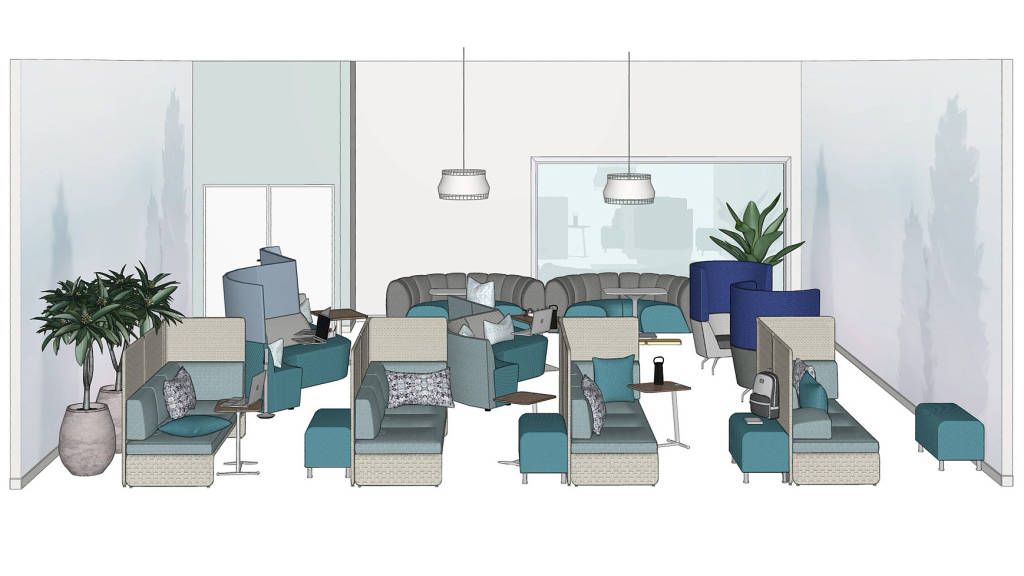
Why it matters: Healthy sleep, nutrition, exercise and stress-management habits support optimal brain functioning, fewer behavioral issues, higher concentration, less stress and greater achievement.
How the learning environment can help:
- Design safe environments that support health
For example: Provide appropriate distancing, cleanability and air circulation; ensure plentiful, appealing food options and enjoyable movement opportunities; leverage outdoor spaces
- Invite movement
For example: Encourage movement with rocker-based seating options and sit/stand settings; designate different areas for different activities
- Support respite
For example: Create places that allow students and teachers to comfortably rest when needed
Ready to Begin Reimagining Your LEARNING SPACES?
Take a next step with these planning ideas. You’ll find a variety of ideas and layouts, all demonstrating ways to create educational environments that purposefully nurture student and educator wellbeing. Connect with us to understand how these considerations can be integrated into your learning spaces.


